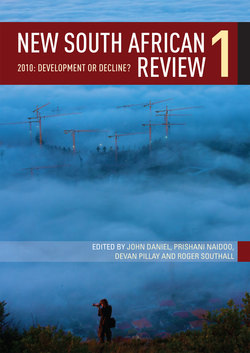Читать книгу New South African Review 1 - Anthony Butler - Страница 29
CHAPTER 2 The international economic crisis and employment in South Africa
ОглавлениеNeva Seidman Makgetla
The international economic crisis had a significant impact on South Africa, with a drop in the GDP and an even larger decline in employment from the end of 2008 through the third quarter of 2009. The impact was greatest in low-income, marginalised sectors – informal, domestic and agricultural workers – and for young adults.
Two aspects made the employment losses particularly harmful. First, South Africa has long faced unusually high joblessness by international standards. Second, the strong decline in employment in low-income sectors aggravated already deep inequalities.
Government’s short-run response, which included a counter-cyclical fiscal policy and substantial infrastructure investment, moderated the drop in investment and growth and presumably the loss of jobs. But it did not prevent a significant fall in employment or provide support directly to the self-employed informal and domestic workers who lost their incomes. A central weakness was the failure to address international capital flows, which recovered long before the world economy and propped up emerging economy currencies like the rand. That, in turn, undermined the competitiveness of the economy as a whole, slowing the overall recovery.
More broadly, the crisis pointed to the need to re-think traditional approaches to industrial policies, which still largely shaped South African economic policies. In particular, the space for growth on the basis of expanding exports of manufactures, always quite narrow for South Africa, seemed likely to shrink with the structural changes in the global economy associated with the crisis.
The first section of this paper reviews trends in employment for the year from the end of 2008. The second section describes the context – the high levels of joblessness and inequality that persisted even when the economy was growing relatively strongly before 2008. Section three describes the government response to the crisis as well as the available indications of its impact. The final section reflects on some of the implications for longer-term development strategy.
